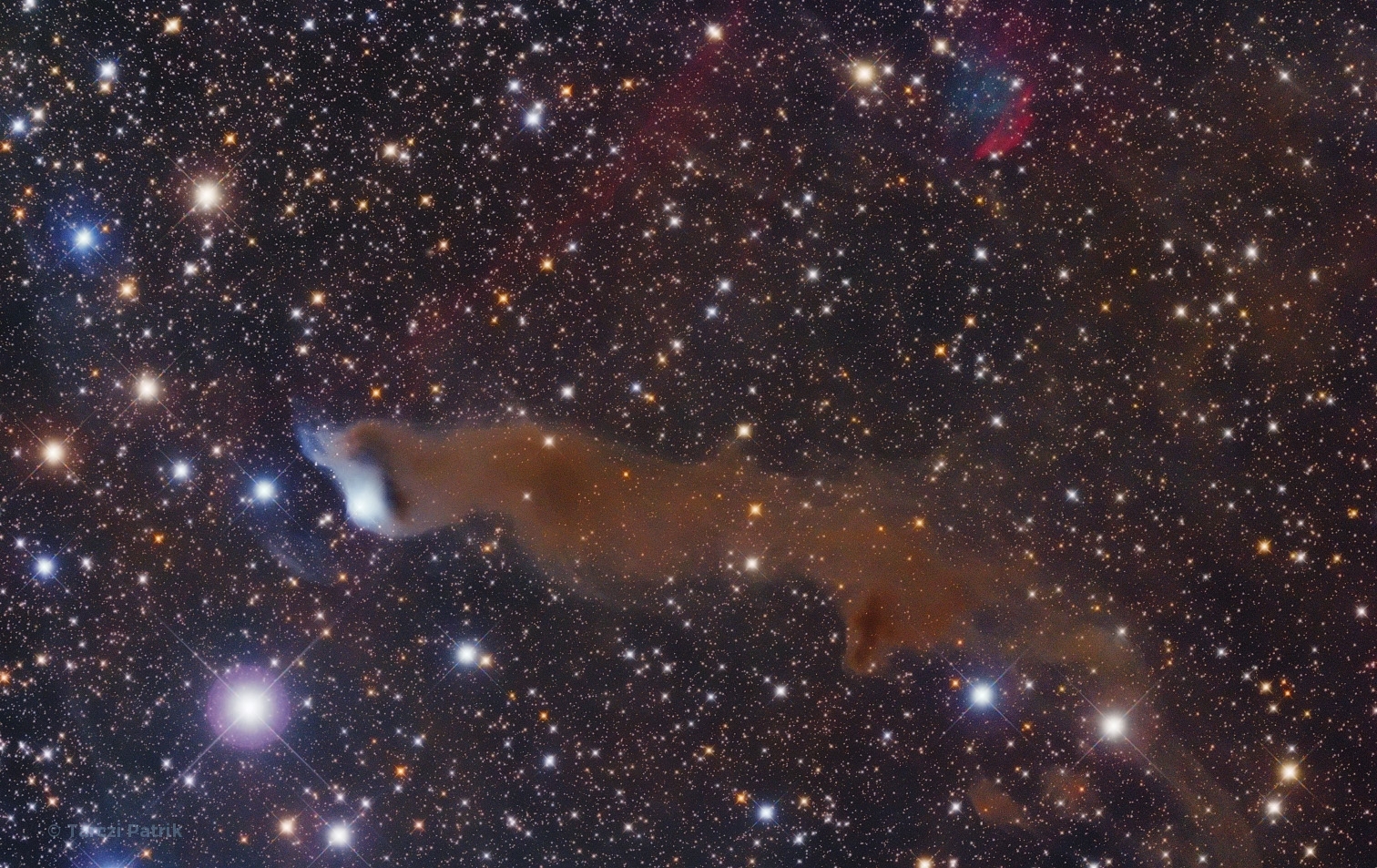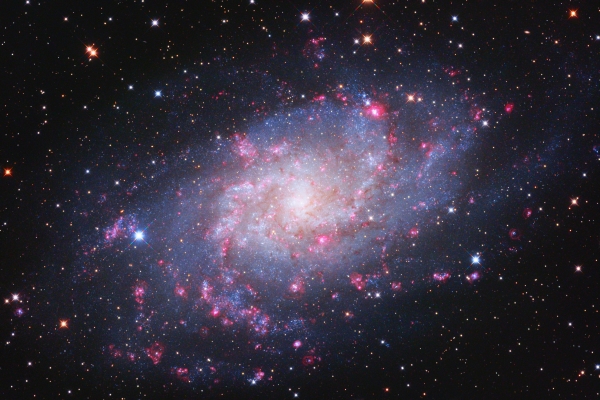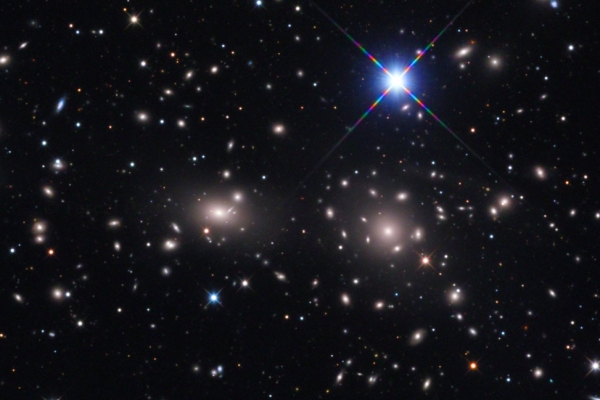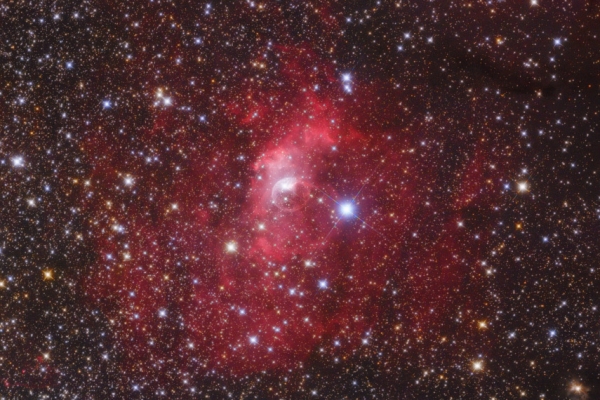In the shadow of VdB152
LDN 1216, SNR 110.3+11.3, HH450

Technical data
| Instrument: | 173/700 Newton-astrograph (ZsIO), SkyWatcher comacorrector F/4 |
| Camera: | Canon EOS 60D (modified) |
| Filter: | Baader UV/IR block |
| Mount: | SkyWatcher NEQ6 Pro Synscan (modified) |
| Guiding: | Lacerta M-Gen autoguider |
Image data
| Exposure time: | 167 * 5 mins, ISO800 |
| Location, date: | Hungary, Mount-Mátra, Ágasvár - 2014. August. 22. |
| Transparency: | 7/10 |
| Seeing: | 7/10 |
| Temperature: | 13 °C |
| Processing: | CCDStack, Registar, Pixinsight LE, Photoshop |
Description
VdB152 is a reflection nebula, which is illuminated by a star. The molecular cloud, LDN1216, is a dark nebula located in constellation Cepheus.
The most exciting part of the image is a Herbig Halo object, called HH450 and the supernova remnant arc going across the image, which is named SNR 110.3+11.
Technical data
| Instrument: | 173/700 Newton-astrograph (ZsIO), SkyWatcher comacorrector F/4 |
| Camera: | Canon EOS 60D (modified) |
| Filter: | Baader UV/IR block |
| Mount: | SkyWatcher NEQ6 Pro Synscan (modified) |
| Guiding: | Lacerta M-Gen autoguider |
Image data
| Exposure time: | 167 * 5 mins, ISO800 |
| Location, date: | Hungary, Mount-Mátra, Ágasvár - 2014. August. 22. |
| Transparency: | 7/10 |
| Seeing: | 7/10 |
| Temperature: | 13 °C |
| Processing: | CCDStack, Registar, Pixinsight LE, Photoshop |
© Patrik Tarczi
Recommended photos

The Triangulum Galaxy
The Triangulum Galaxy is the brightest galaxy of the constellation Triangulum, which is just visible to the naked eye.

Coma Cluster of Galaxies
Coma Cluster is a dense cluster of galaxies in constellation Coma Berenices. It contains over 1,000 identified galaxies. Along with the Leo Cluster, they make up the Coma Supercluster.

The Bubble Nebula
The Bubble Nebula and its surroundings, inter alia, M52 located in the border of constellation Cassiopeia.


